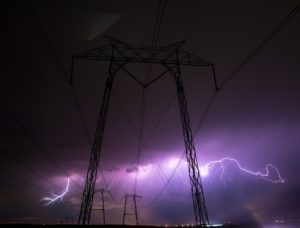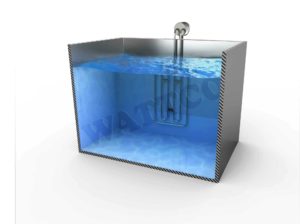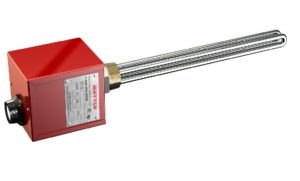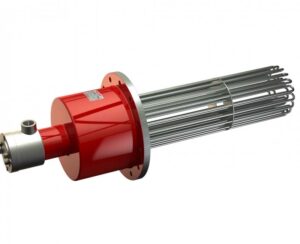Gas versus Electric Heating
What is Electric Heating?
 The procedure to transform electrical energy to generate heat is known as electric heating. It is done using many different devices, mostly electric heaters, which you will find almost in every household nowadays. However, the same process in industries is done with more powerful machines and sturdy heating devices. Today, immersion heaters are used in industries and homes for quick and efficient electric heating. These gadgets are available in different sizes and power ranges, so you can choose any accordingly to your need.
The procedure to transform electrical energy to generate heat is known as electric heating. It is done using many different devices, mostly electric heaters, which you will find almost in every household nowadays. However, the same process in industries is done with more powerful machines and sturdy heating devices. Today, immersion heaters are used in industries and homes for quick and efficient electric heating. These gadgets are available in different sizes and power ranges, so you can choose any accordingly to your need.
Electric Heating Method
Immersion heaters are mounted over and installed in a tank carrying either oil, chemicals or water. Either the control mechanism is fixed with the heating device on the exterior wall or a separate room, also called a closed system. Its purpose is to house all the functions that will be required to make the contraption operational.
Once fixed and turned ON, they will start to heat up the liquid inside, using electricity as a key source. The latest design and manufacturing concept in these heaters is the inclusion of a temperature controller with which you can adjust the exact temperature required to stabilize the content within the tank. Liquid and gases are also kept at a constant pressure using immersion heaters, which are widely used in many industrial manufacturing processes.
Types of Immersion Heaters
There are many different types of immersion heaters available. Below are a few common ones, which are widely used, along with diagrammatic images and details for a more detailed overview.
Over the side heaters – These are designed especially for tanks that do not support any heater; you have to attach the contraption on the side of the tank to make it work. You must put the heater down into the tank from the top and attach it to the sidewall that, once turned ON, will circulate the flow of heat.
Flanged – This type of heater comes with a bent tool that must be welded during installation time. A wiring box is also available with the contraption that houses the entire heating control system and the temperature control feature. The most common use of this flanged immersion heater is within pressurized vessels and tanks carrying liquid elements. You can also monitor and even control the machine.
 Threaded/Screw Plug –This heater can be directly welded on the side of the tank. Screwplug heaters have a wiring box with all the control mechanisms built in. This heater not only keeps the liquid at a stable temperature but also prevents it from freezing in cold weather.
Threaded/Screw Plug –This heater can be directly welded on the side of the tank. Screwplug heaters have a wiring box with all the control mechanisms built in. This heater not only keeps the liquid at a stable temperature but also prevents it from freezing in cold weather.
No matter which type of heating device you use, it is very common that they are likely to get burnout as their life span is completed. However, in this case, you do not need to buy a new device, instead, just change the heating element, and it will all be as good as new.
Oil Immersion Heaters
These are permanently installed in the oil tank or container, which cannot be detached. They are designed with a strong body and robust technology to make them withstand any environment along with being longer lasting than others. Oil heaters also require little space for installation as they are smaller than the gas heaters. The control mechanism and heating tool, which is also called the “pocket tube”, is kept outside the tank so it is protected from the oil itself. This is also beneficial, as if the heater goes haywire, you will not need to empty the entire tank just to fix it.
Most common aspects of the oil immersion heater are the surface load, which must be kept at a constant
temperature in order to prevent the oil from getting deteriorated. If this happens, carbon layer will be amassed on the device which will interrupt the heat transfer.
Electric Heater Elements & Their Technical Specifications
Usually, an electric or immersion heater is composed of a metal base that is carefully welded with electric heaters. These heaters are flat or long, tubular shaped depending on the design and manufacturing concept. Each heating rod is coated with superior quality Nickel Chromium wire along with Magnesium Oxide, which is an electric insulator that is used for quick heating, and prevention against rust and corrosion. Beside this, all of this is especially designed to make it shock resisting but still, one must be very careful while handling these types of tools. Temperature controlling mechanism is also built within the contraption, so you can adjust the heat as per requirement.
Check below for more details;
Voltage– 24Vdc to 3x690Vac
Immersion Length– As per requirement
Temperature Control– Fixed or adjustable
Heating Material– Brass or stainless steel
Control Box– Electrified silumin or copper, coated steel
Gas versus Electric Heating
Gas and electric heaters are both ideal in their own way. But considering the efficiency and time needed to complete the process, many engineers and industrialists prefer electric immersion heaters. This is due to the ease with which engineers can control electric heaters. However, both can take the billing cost up to the sky in the cold season, so it is very important to manage them properly.
Gas heaters need fossil fuel to keep them functional, whereas electricity is available everywhere, and electric heating is considered environmentally friendly. The control mechanism is another aspect in which electric immersion heaters are more advantageous because managing and functioning them is easier and simpler than gas heaters.
Repairing and maintenance of each method of heating are considered to be similar. However, another advantage of electrical heating is that if a heating element is damaged or burned, you simply have to replace it instead of buying a complete system which can be very expensive.
What Do Engineers/Industrialists Prefer?
Considering the limited time to carry out numerous daily tasks and manufacturing processes, immersion electric heaters are the top choice for many industrialists. That includes personnel working in industries involved in developing and producing various consumer goods.


